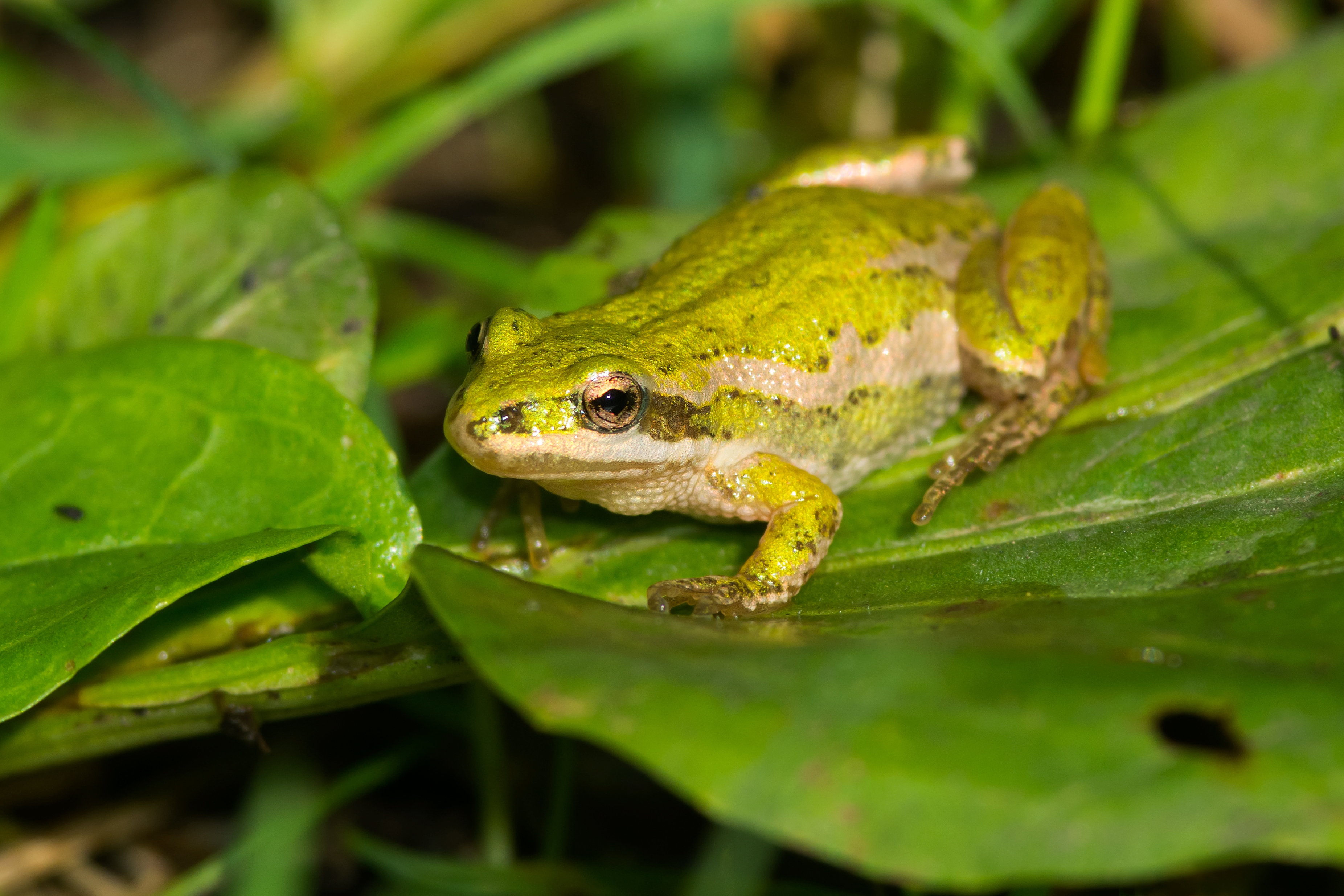Boreal chorus frog
(Pseudacris maculata)

Description
The boreal chorus frog (Pseudacris maculata) is a species of chorus frog native to Canada from central Quebec to eastern British Columbia and north to the Northwest Territories and the southern portion of the Yukon. It occurs in the USA throughout Montana, northwestern Wisconsin, northeastern Arizona, northern New Mexico, and southwestern Utah. This small species of frog reaches about 30 mm in length. It is highly variable, but is normally brown, and can be green on the dorsal surface, with three broken dorsal stripes; these stripes can be very distinct to quite faint. A dark band is present from the snout, across the eye, and continuing down the side. It has slightly enlarged toe pads to help in climbing small grasses and vegetation. This species is very similar to the western chorus frog (Pseudacris triseriata). It can be distinguished from this species by having shorter legs. Pseudacris maculata is categorized as an annual breeder. Breeding takes place once the weather begins to warm, typically from late February to around April. After mating, a single female can lay anywhere from 500-1500 eggs, with a highly variable hatching rate of anywhere from 37% to 87%.The life cycle continues with tadpoles metamorphosing around June or July. The metamorphosis survival rate also has a massive range of 10-100% in the wild. Amphibians are widely known as very important species in their ecosystems, but declines are occurring worldwide in amphibian populations. There are multiple reasons that amphibians decline, with the most common being disease, habitat loss, over harvesting for food, pet trade, and competition with invasive species. Climate change has also been one of the proposed mechanisms for why this species is struggling. Climate change is causing the weather to become increasingly dry, which affects most amphibians (including Pseudacris maculata). This change leads them to modify their behavior based on the environmental conditions and sometimes exposing them to conditions that are not optimal. This dry weather has another effect on this species, it results in lower water levels, which exposes the amphibians and their eggs (which are laid in the water) to more extreme temperatures. This, coupled with the decrease in ozone layers, also exposes the amphibians and the eggs to heightened levels of UV radiation when compared to environments with deeper waters.
Taxonomic tree:







